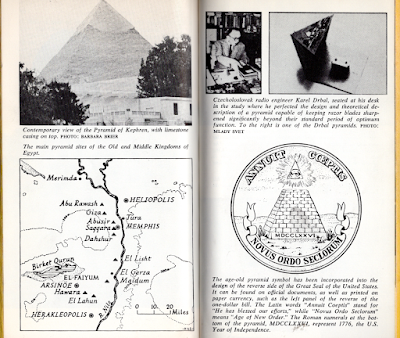SHARK ATTACK! Two of the most terrifying words together in the English language: a short, sharp stab of panic, of unthinkable misfortune and doom inevitable. Even before Jaws' block busting summer run in 1975 there was something in the water that decade, and it seemed like sharks were having their moment, thrusting out of the shadows of legend into our new jet age of science and reason, surging out into daylight but still draped in their mythic finery as demons of the deep. Scads of exploitation films and documentaries before and after Jaws were showcasing one of man's oldest, most implacable monsters in the most outrageous ways they could:
Keeping with the dual traditions of fish tales and filmmaking, some of them couldn't help but sweeten the pot: the Burt Reynolds vehicle Shark! from 1969 for instance made promotional chum out of the supposed maiming of a diver during filming. Thankfully, it seems that it was all just typical exploitation ballyhoo for an otherwise mediocre (and shark-lite) film. For more examples of sharks in the popular culture of the time, the fine folks of the Men's Adventure Library have published an excellent collection of shark stories, succinctly titled Maneaters:
Amid all this overheated myth making and outright confabulation, enter H. David Baldridge, naval scientist and writer, who undertook the Herculean task of sifting through the International Shark Attack File in order to bring some order to the protean mass of Carcharian terror. The result was this book, possibly the densest and most factual of the many, many shark books released through the '60s and '70s. One previous entry of ours, Shark: The Killer of the Deep edited by Loren Grey, name drops Baldridge's work here for good reason. Baldridge's text is readable, his prose personable, and above all he is careful in his weighing of evidence and interpretation of fish tales - despite the cover blurb's invocation of Benchley's novel, not yet adapted into film at the time of this book's publication.
For starters, we should know that the ISAF is a frustratingly fragmented resource, being as it can only contain reported attacks. Baldridge laments that documentation outside the former imperial core is thin on the ground, but he does the best he can with the fleeting news items and occasional rumors. On the other hand, American files yield many gruesome encounters, as do the Australian and South African archives. When you're inland in South Africa, by the by, beware the Zambezi sharks, so named for their habit of swimming hundreds of miles up the Zambezi River to occasionally attack the unsuspecting! Iran and Nicaragua also feature freshwater shark attacks, as does India's famous Ganges, the site of many religious water burials said to attract scavenging sharks. The question of sharks eating carrion is considered and answered in the positive, whereas many other concerns remain murky - would you guess that we don't actually know how well sharks can smell blood in the water, if at all? Again, Baldridge is thoroughly scientific in his approach and is always honest as to the limits of our current knowledge. The infamous New Jersey shark attacks of 1916 get a sober overview as well, adding to the freshwater carnage. 

Unlike a lot of the trashier paperbacks on the subject, Baldridge avoids bloody victim photos and writes with dry appraisal of shark/human interactions. One humorous anecdote he relates involves the US Navy's "shark chaser" formula, an anti-shark liquid supplied to pilots in the event of a water landing. Baldridge reveals that the Navy had quickly deduced that shark chaser had little to no effect on sharks (its primary target mind you), but that the psychological value to downed pilots was so valuable as to necessitate its continued kitting. Sharks attacks are, after all, exceedingly rare, as Baldridge reminds us often through the text, and so the practical uselessness of the formula was actually a very small kink in the face of its overall effectiveness. And surprisingly or not, more often than not, poor relations are a direct result of provocation from Homo sapiens, as Baldridge relates of many people who thought it great fun to grab a little shark by the tail, or toss grenades overboard, and found themselves gnawed or exploded for their troubles - the grenades were courtesy some GIs disposing of old stock, and their intended victims swam directly under their boat after ingesting the explosives, sending all involved sky high. Baldridge can't resist gloating a little at these just desserts: all the sharks are doing, after all, is living their best lives, as they've lived for hundreds of millions of years.
We stop over in Florida to visit ichthyologist Eugenie Clark, working at her lab on cutting edge shark research. Clark is an appealing figure, taking scientific research into the primal realm of her subjects. In her own memoir she dubbed herself the "lady with a spear." A modern article on Clark yields these great photos:
Our global tour of shark attacks doesn't just list the heavy hitting man eaters like the massive Great White or the voracious Tiger, but plenty of dark horses and also rans such as the Bull Shark (a frequent freshwater interloper), the small and scruffy Wobbegong (scourge to Australian fishermen caught in its tenacious jaws) and Zane Grey's old fishing foe the zippy, snippy Mako. The variety and range of shark species and their spectrum of interactions with humans, sometimes banal, sometimes horrific, is as much a part of Baldridge's story as any of the "classic" images of what a shark attack entails. Australian and South African beaches do their best developing anti-shark measures, testing nets and lookout guards as well as kooky electronic systems. Pearl and abalone divers in California and the South Pacific may or may not carry bang sticks or spears, but they learn not to dawdle with their catch regardless, and here Baldridge does conclude pretty solidly that keeping dead fish on your person underwater is a surefire way to initiate a close encounter with sharks! Various islanders and coastal peoples around the world deal with maddened sharks who seem obsessed with ramming their dingys and canoes, and here Baldridge isn't quite sure what the sharks are thinking. But whether or not he has the answers, he's asking the right questions, and with that, there's not much else to say!
For its methodology and historical value, Shark Attack proves fascinating reading almost 50 years on and a worthwhile addition to any curious reader's library. It's available to read and download at archive dot org.
A Berkley Medallion Book, 1974



















































